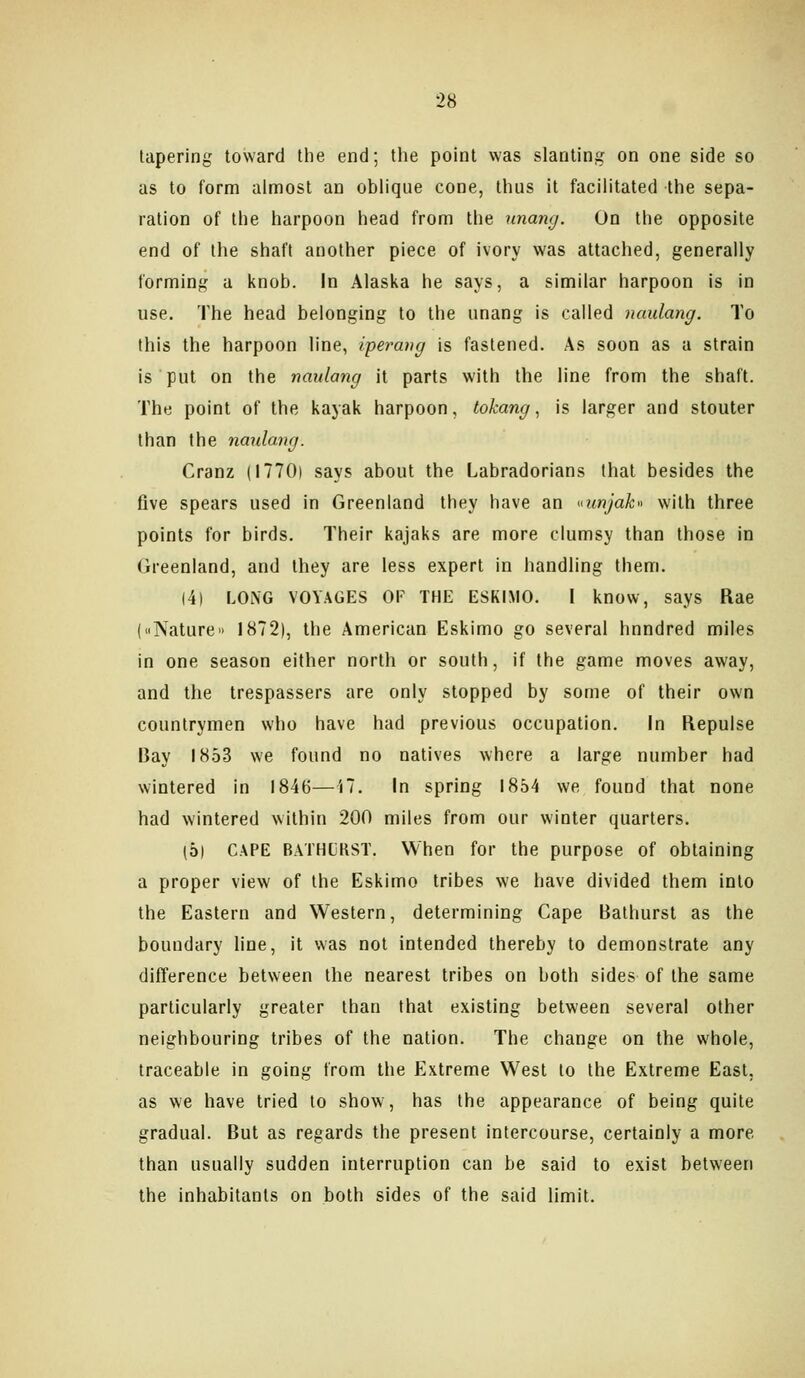
Full resolution (JPEG) - On this page / på denna sida - The origin of the Eskimo as traced by their language - Various Notes

<< prev. page << föreg. sida << >> nästa sida >> next page >>
Below is the raw OCR text
from the above scanned image.
Do you see an error? Proofread the page now!
Här nedan syns maskintolkade texten från faksimilbilden ovan.
Ser du något fel? Korrekturläs sidan nu!
This page has been proofread at least once.
(diff)
(history)
Denna sida har korrekturlästs minst en gång.
(skillnad)
(historik)
tapering toward the end; the point was slanting on one side so
as to form almost an oblique cone, thus it facilitated the
separation of the harpoon head from the unang. On the opposite
end of the shaft another piece of ivory was attached, generally
forming a knob. In Alaska he says, a similar harpoon is in
use. The head belonging to the unang is called naulang. To
this the harpoon line, iperang is fastened. As soon as a strain
is put on the naulang it parts with the line from the shaft.
The point of the kayak harpoon, tokang, is larger and stouter
than the naulang.
Cranz (1770) says about the Labradorians that besides the
five spears used in Greenland they have an «unjak» with three
points for birds. Their kajaks are more clumsy than those in
Greenland, and they are less expert in handling them.
(4) LONG VOYAGES OF THE ESKIMO. I know, says Rae
(«Nature» 1872), the American Eskimo go several hundred miles
in one season either north or south, if the game moves away,
and the trespassers are only stopped by some of their own
countrymen who have had previous occupation. In Repulse
Bay 1853 we found no natives where a large number had
wintered in 1846—47. In spring 1854 we found that none
had wintered within 200 miles from our winter quarters.
(5) CAPE BATHURST. When for the purpose of obtaining
a proper view of the Eskimo tribes we have divided them into
the Eastern and Western, determining Cape Bathurst as the
boundary line, it was not intended thereby to demonstrate any
difference between the nearest tribes on both sides of the same
particularly greater than that existing between several other
neighbouring tribes of the nation. The change on the whole,
traceable in going from the Extreme West to the Extreme East,
as we have tried to show, has the appearance of being quite
gradual. But as regards the present intercourse, certainly a more
than usually sudden interruption can be said to exist between
the inhabitants on both sides of the said limit.
<< prev. page << föreg. sida << >> nästa sida >> next page >>